NetSuite SuiteAnalytics
Source
Polytomic connects to NetSuite SuiteAnalytics using an Integration record and OAuth2. Before connecting Polytomic to NetSuite, you need to configure NetSuite using the steps below.
NetSuite sandbox
Connecting Polytomic to a Netsuite sandbox is no different than connecting to a production instance; the same instructions apply. Indeed, if you have a Netsuite sandbox available we recommend you create two Netsuite connections in Polytomic: one to your sandbox for testing and one to your production instance.
Preparing NetSuite for Polytomic
Polytomic requires that web service-related features be enabled for your NetSuite account.
To enable these features navigate to Setup → Company → Enable Features, then click the SuiteCloud tab.
Under Manage Authentication enable OAuth 2.0.
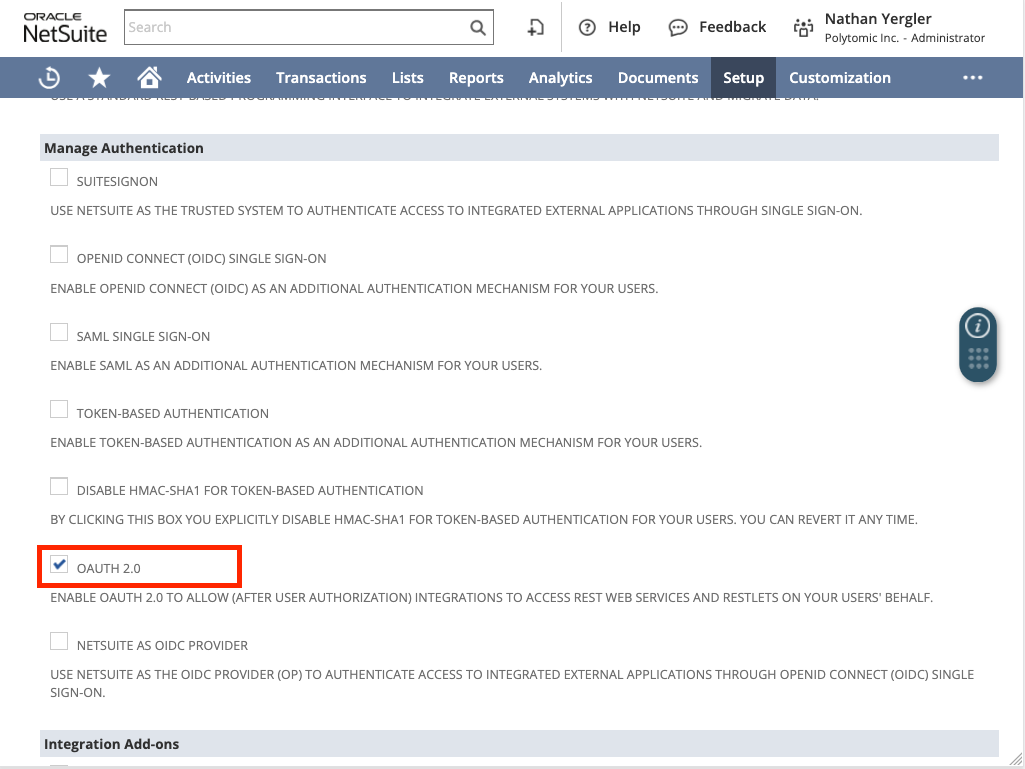
Authentication features to enable.
Create and Configure an Integration
Netsuite uses an Integration record to authenticate requests from Polytomic.
To create an Integration navigate to Setup → Integrations → Manage Integrations → New.
Give the Integration a name such as "Polytomic".
Disable TBA: authorization flow and Token-based authentication.
Under OAuth 2.0, enable Client credentials (machine to machine) grant and the SuiteAnalytics Connect scope.
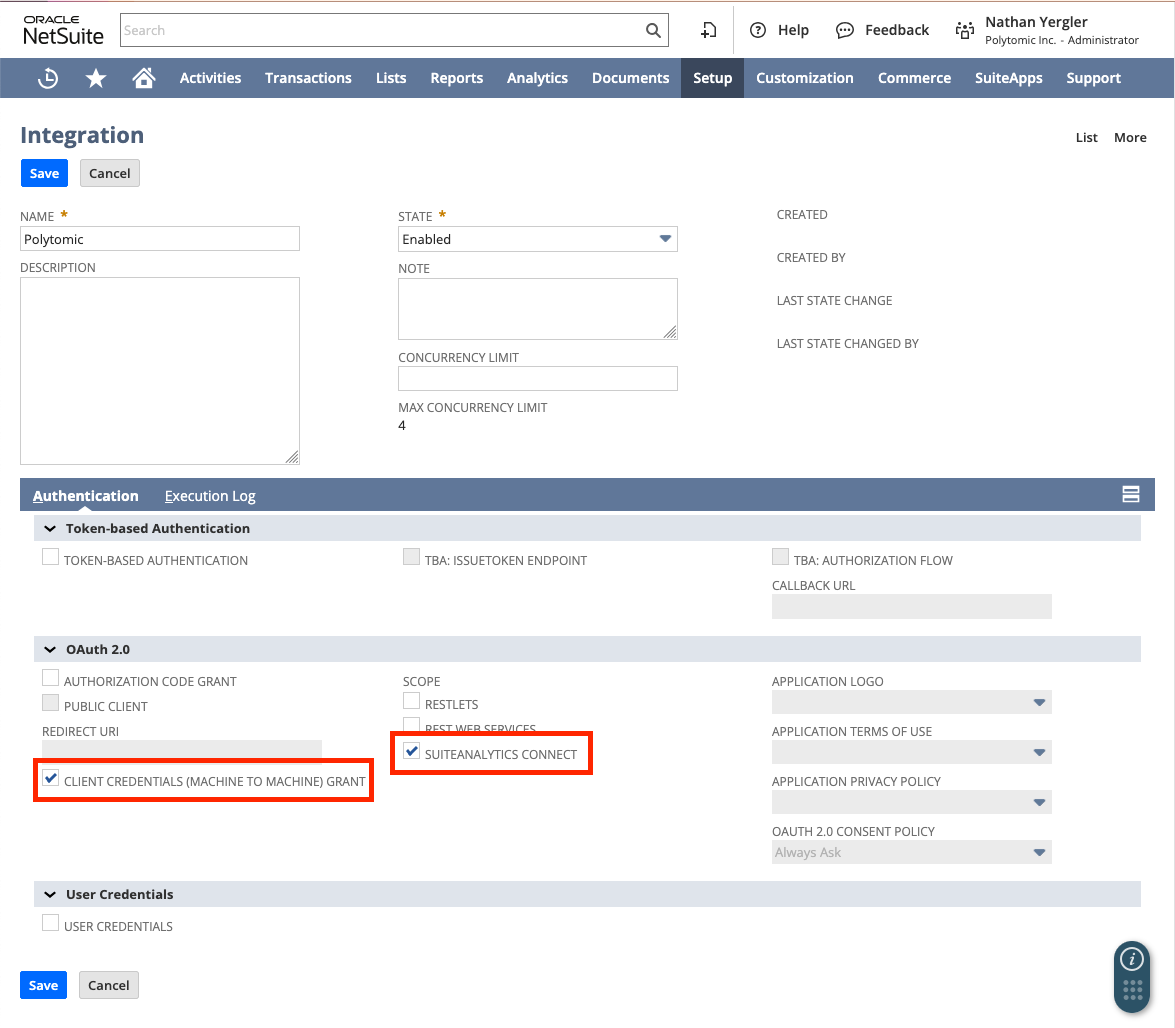
After you click Save, make a note of the Consumer Key/Client ID listed under Client Credentials. You'll need these when connecting Polytomic to Netsuite SuiteAnalytics.
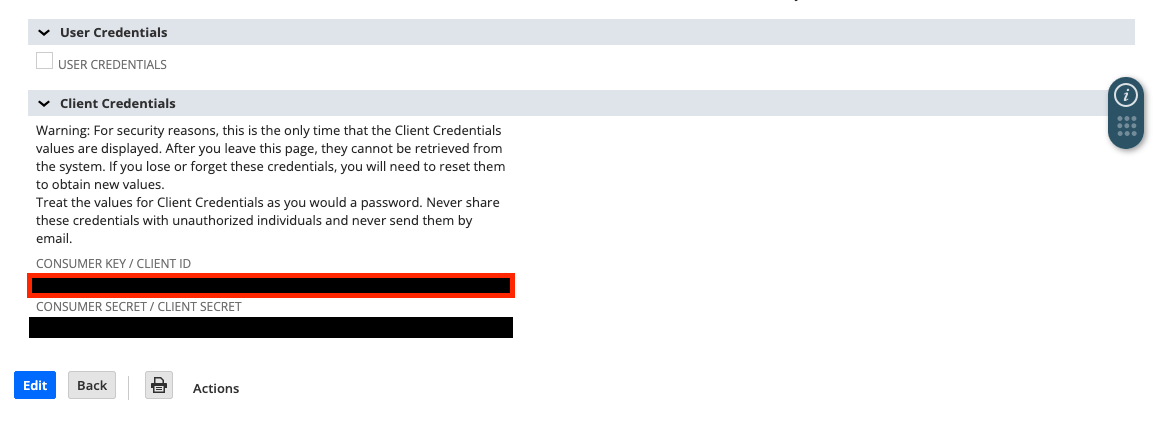
Create a Role
Navigate to Setup → Users/Roles → Manage Roles and click New Role.
Give this role a name like "Polytomic" and check Web Services Only Role.
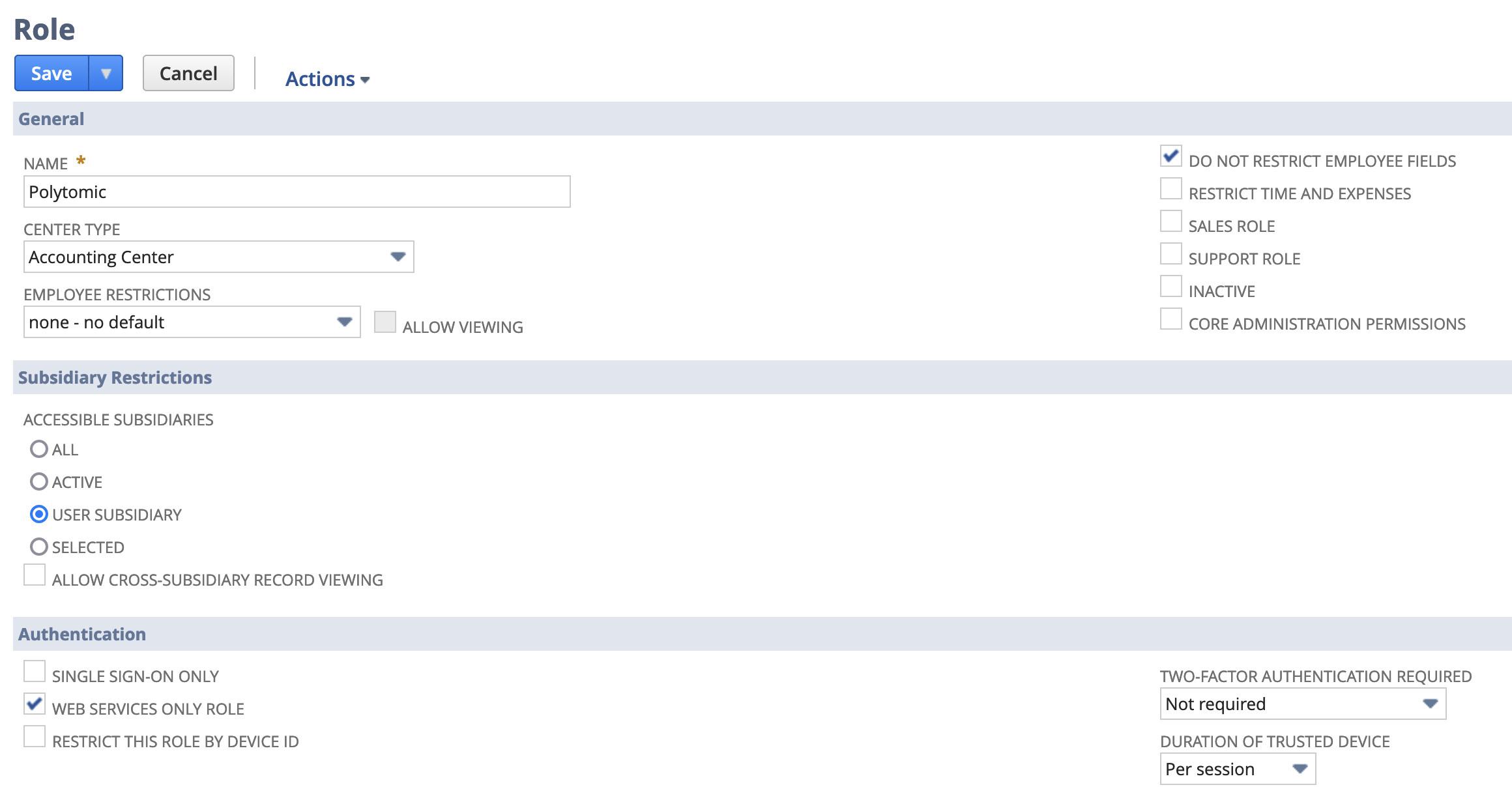
Under Permissions, the available permissions are listed in several tabs. Add the following permissions in the Setup tab:
- Log in using Access Tokens (Full)
- REST Web Services (Full)
- SuiteAnalytics Connect (Full)
Determine the Role ID
After creating the role, look a the list of available roles. If the "Data Warehouse Integrator" role is available, make a note of its Internal ID. If not, note the Internal ID of the role you just created.

You may need to click Edit View in order to display the Internal ID column.
Create a User for Polytomic
We recommend that you create a dedicated user for Polytomic. You can do this by navigating to Setup → Users/Roles → Manage Users.
In the Access tab, assign the role you created above to the user.
If you do not wish to create a dedicated user, at least one existing user must be assigned the role you created for Polytomic.
Create an Authentication Certificate
Generate a public and private key to use for authentication using the following command:
openssl req -new -x509 -newkey rsa:4096 -keyout private.pem -sigopt rsa_padding_mode:pss -sha256 -sigopt rsa_pss_saltlen:64 -out public.pem -nodes -days 730
This will create two files: public.pem and private.pem.
In Netsuite navigate to Setup → Integration → OAuth 2.0 Client Credentials (M2M) Setup.
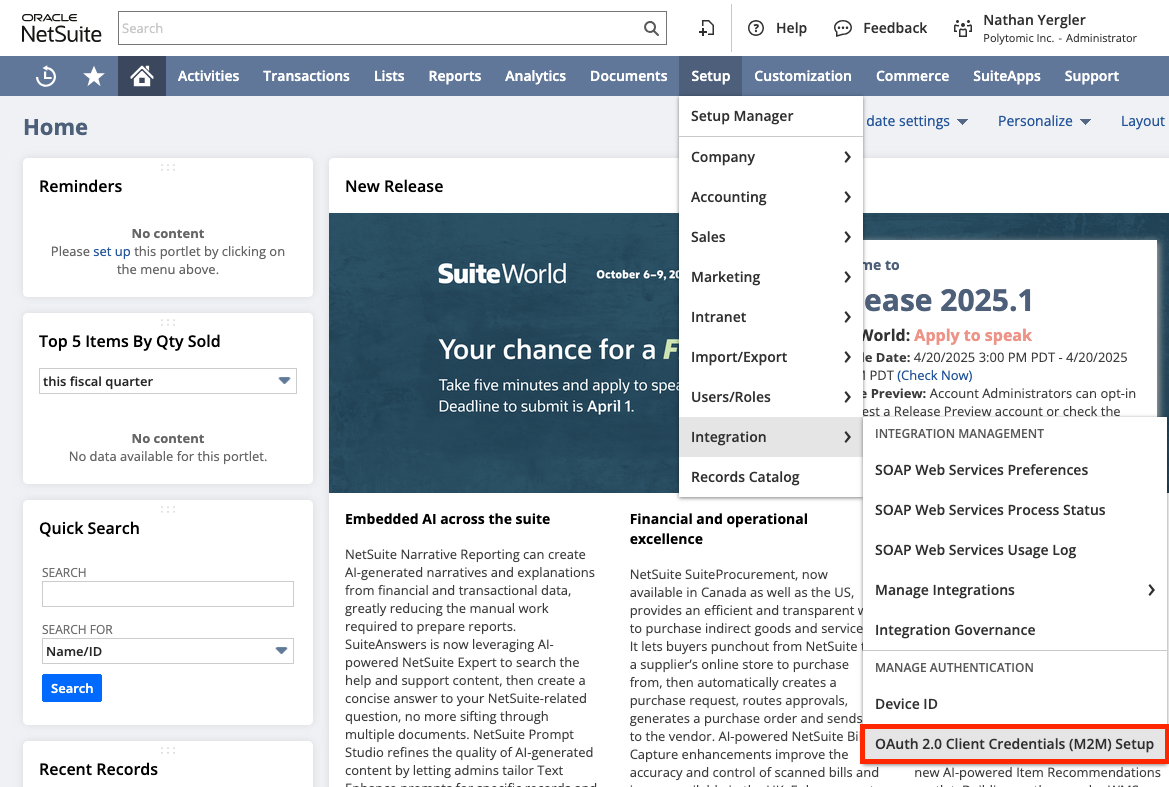
Click Create New and select the user, role, and integration that you previously configured.
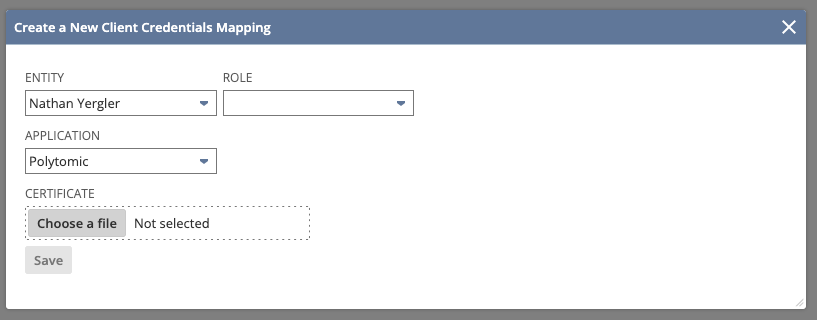
Click Choose a file for the Certificate and select the public.pem file created by openssl.
Click Save and make a note of the Certificate ID.
Connecting Polytomic to NetSuite SuiteAnalytics
-
In Polytomic, go to Connections → Add Connection → NetSuite SuiteAnalytics.
-
Enter your NetSuite Account ID. You can find this by navigating to Setup → Company → Company Information in NetSuite.
-
Enter the Role ID, Client ID (Consumer Key), and Certificate ID provided by NetSuite during the previous steps.
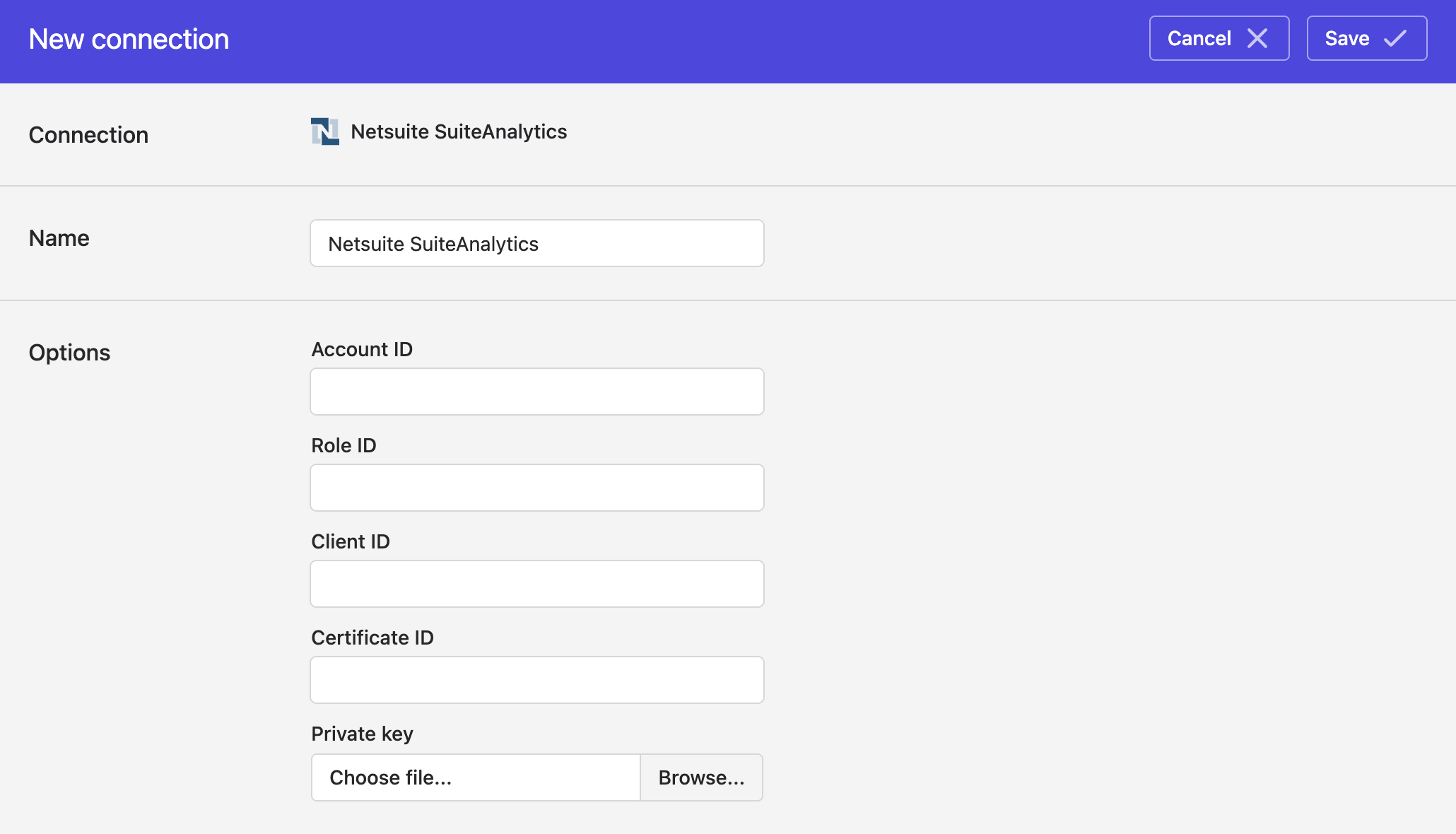
- Click "Choose file" under Private key and upload the
private.pemfile created byopensslin the previous steps. - Click Save.
NetSuite IP restrictions
When saving your NetSuite connection, you may be presented with an error that says Request to NetSuite unsuccessful.
The likeliest cause of this is your NetSuite instance having IP address restrictions turned on. If so, you'll need to add Polytomic's IP addresses to the IP address allow list in NetSuite. If you are running Polytomic on-premises, you'll instead have to add the IP addresses of your internal Polytomic hosts.
Updated 5 months ago